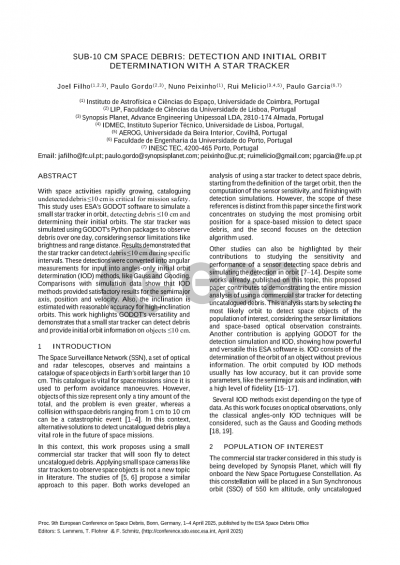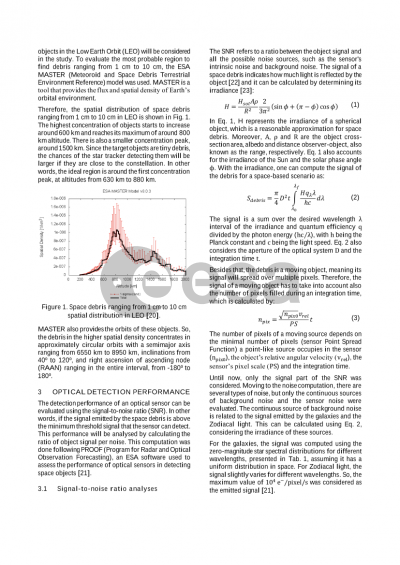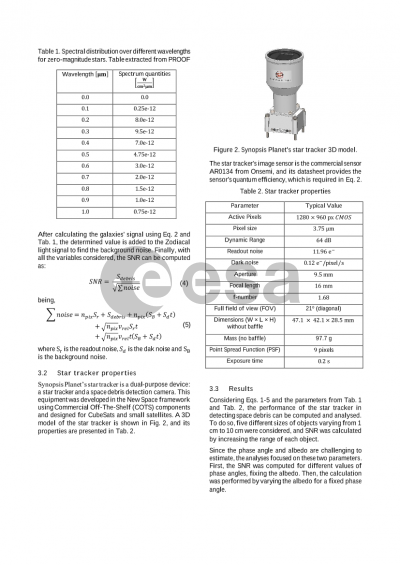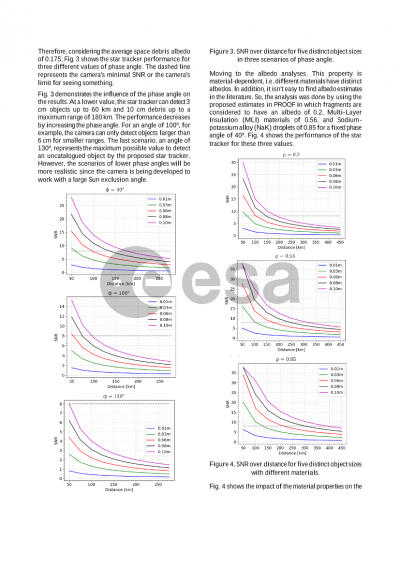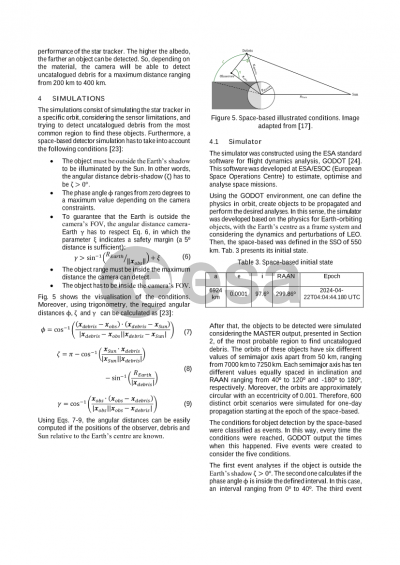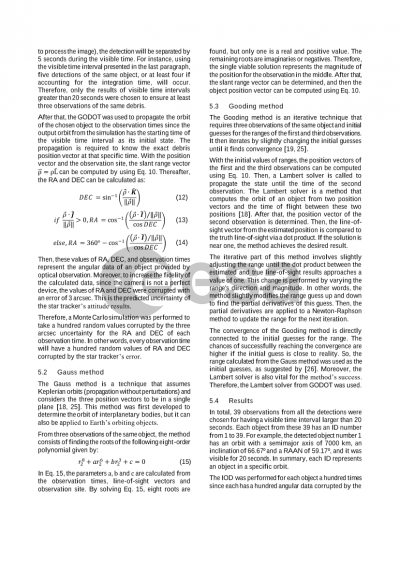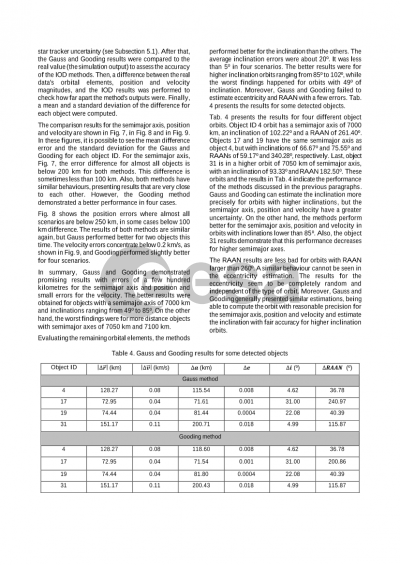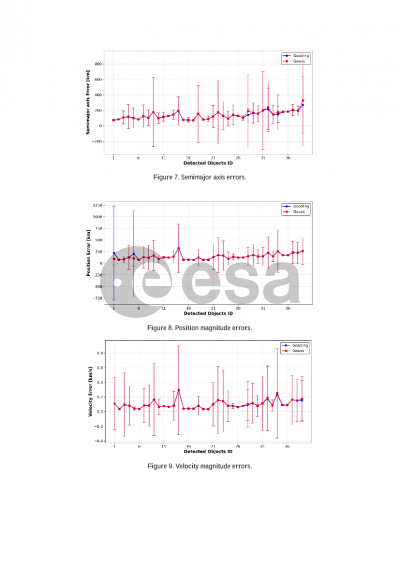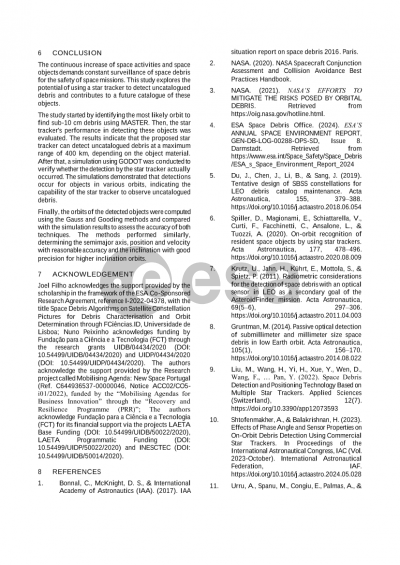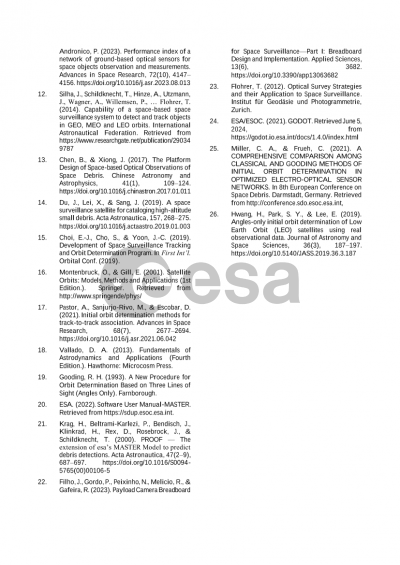Document details
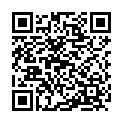
Abstract
With the exponential growth of space activities, cataloguing objects, especially undetected debris ≤10 cm, has become vital for mission safety. This work presents a simulation study using GODOT (ESA's flight dynamics software for mission analysis and operations) to evaluate using a small star tracker in orbit to detect debris ≤10 cm and determine their initial orbit. It assesses whether known initial orbit determination methods can provide satisfactory results. GODOT is a powerful and versatile software that allows for the computation and analysis of any space-related task. Therefore, the star tracker was simulated in orbit using GODOT's Python packages to detect debris at various locations over one day of observations. The simulation aimed to qualify the star tracker's ability to detect debris ≤10 cm. It accounted for the sensor's limitations, such as the maximum distance the camera can observe objects as a function of their brightness properties. The simulation results show that the star tracker can detect objects ≤10 cm during specific time intervals. The simulated detections obtained during several time intervals were converted into angular measurements. These were input to angles-only initial orbit determination methods like Gauss and Gooding. First, these techniques were adapted to use GODOT functions. Then, the resulting orbits were compared with the simulations. The calculations show that the initial orbit determination methods can provide satisfactory results for the semimajor axis, inclination, and right ascension of the ascending node, particularly for observations in high-inclination orbits. This work demonstrates the versatility of GODOT and indicates that a small star tracker in orbit can detect debris and provide initial orbit information, representing an initial step toward a future catalogue for objects ≤10 cm.
Preview
